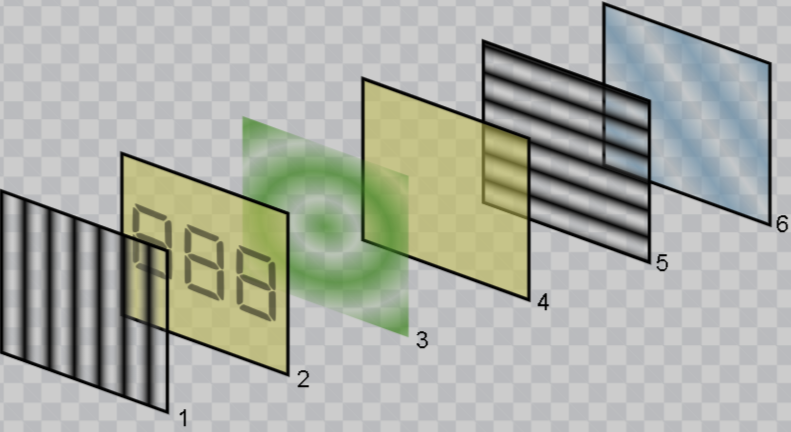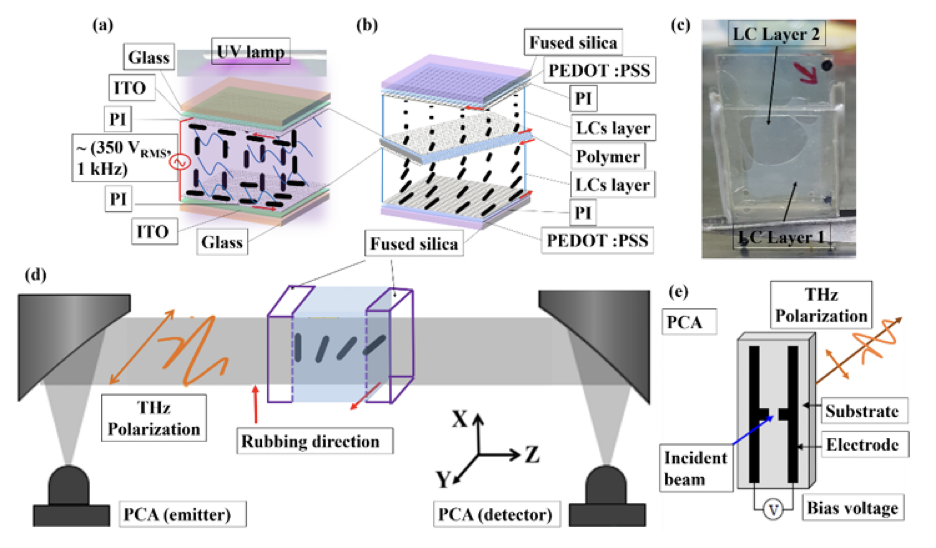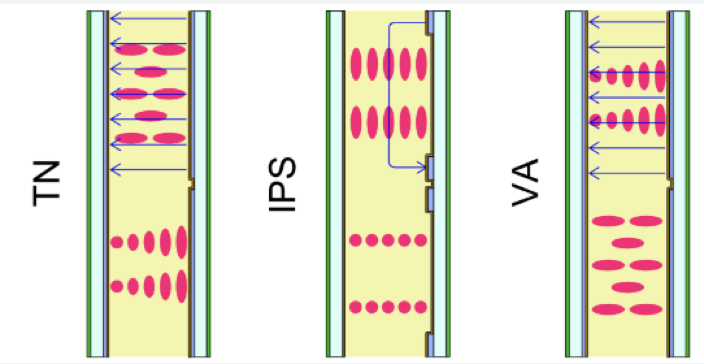Article Directory
What is a TN Panel?
Explanation of “What is a TN Panel”?
Working principle of TN Panel Technology
What are the characteristics of a TN Panel?
What are the Disadvantages of a TN Panel?
What are the applications of TN Panels?
Comparison with Other Panel Technologies
Future Trends and Developments in TN Panel Technology
Conclusion and Bottom Lines on “What is a TN Panel”
The TN panel technology dominates LCD display markets because it provides both quick response times and reasonable pricing. Gaming monitors together with industrial equipment depend on TN panel technology because they need fast response times paired with cost-efficient displays. TN panels fall short in professional color-sensitive work because they show poor color accuracy and limited viewing angles. Research efforts in display technology advancement attempt to improve performance characteristics of TN panel displays. The high-speed and cost-effective nature of TN panels continues to be useful in particular applications even as IPS and VA panels become more popular.
What is TN Panel?
Let’s learn about “What is a TN Panel?” The TN (Twisted Nematic) panel technology represents a decades-tested version of LCD (Liquid Crystal Display) used in monitor displays. Panels based on TN technology earn their name from utilizing twisted nematic liquid crystal arrangements. TN panels operate through a 90-degree twisted arrangement of liquid crystals that grants them higher speed and lower energy usage against other monitor technologies. TN panels deliver rapid response time and affordable prices to the market available panels. TN panels find extensive use in budget monitors and gaming displays since their budget-friendly nature matches well with quick-paced content needs.
The history of TN panel technology began in the 1960s with George H. Heilmeier inventing the initial liquid crystal displays. Dr. Martin Schadt at the University of California, along with other researchers, led TN panel technology development until the 1980s when they started forming the modern technology we have today. Since their inception, TN panels have evolved through improved production approaches and raw material selection, which created enhanced image quality, enhanced response speed, and reduced product expenses. TN panels achieve fast response times, which allows them to suit needs in gaming applications. TN panels deliver substandard results when it comes to color precision and angle viewing. True color reproduction becomes restricted by the TN panel design, which uses nematic liquid crystal alignment. The illustrated figure 1 shows a TN panel display.

Figure 1: TN Panel Screen
Explanation of “What is a TN Panel”?
A TN panel functions as a fast and affordable LCD device that directs light using liquid crystals. The industrial, budget display and gaming monitor sectors use TN panels as their main display option.
Working principle of TN Panel Technology?
The LCD monitor TN panel includes electrodes that exist on each side of the glass. The liquid crystals rotate through 90 degrees when no electrical charge exists. The first polarizer transmits light that the liquid crystals alter through a twist motion to match the orientation of the second polarizer. The pixel looks bright when light passes through such an arrangement. Voltage application leads to liquid crystals reorienting themselves in line with the electric field direction. Thus, they lose their twisting ability. The absence of alignment between the backlight light and the second polarizer stops its passage. Thus, the pixel appears dark. The liquid crystals achieve their various alignments through changes in voltage control. The device regulates how much light travels through while producing various levels of brightness. It also creates grayscale images.
TN panels use liquid crystals between two glass plates, which contain electrodes for operation. An applied electric current makes liquid crystals rotate into an electric field alignment so light can pass through the display to produce images. The fundamental operational principle of TN panels depends on nematic liquid crystals twisting.
Various essential components enable TN panels to function according to their design.
- The application of electric fields by thin-film transistors (TFTs) enables electrode control over liquid crystal alignment through which light transmission is governed.
- Polarizers set at right angles to each other allow light to align with liquid crystals, thus enabling the twisting and untwisting process that regulates light transmission.
- A cold-cathode fluorescent lamp (CCFL) or light-emitting diode (LED) functions as the backlight for illuminating liquid crystals that produce visual outputs.
A TN panel goes through the sequence to generate an image display:
The first polarizer allows the backlight illumination to continue. An electric field from the electrodes produces alignment effects in liquid crystals, resulting in either light blocking or passage. After appropriate alignment, the liquid crystals achieve image display by governing light transmission. The second polarizer manages light flow to achieve image alignment with the liquid crystals, which produces the final displayed picture. The different stages of a TN Panel for image generation can be observed in figure 2. The bi-layer TN-LC THz phase shifter is depicted through a complete visual representation in figure 3. The process of photo-polymerization used to create the polymer thin film appears in the schematic of (a) while this film serves as the critical component for aligning the liquid crystal (LC) layers. The depiction in figures (b) and (c) shows the phase shifter’s composition which includes separate LC layers and an LC composite polymer thin film with the designated rubbing directions illustrated through red arrows. The THz measurement configuration appears in (d) of the image with (e) revealing the polarization state of waves created and measured by photoconductive antennas (PCAs). These detailed images clarify how THz-phase modulation features together with polarization control operations function within this frequency band.


Figure 3: Comprehensive Fabrication and Visualization of TN Panel
What are the characteristics of a TN Panel?
A monitor with a fast response time lets pixels modify color values rapidly, which creates a smooth, advanced image output. TN panels have a quick response time between 2-5 milliseconds, which enables perfect usage for high-speed applications such as gaming and video editing.
Quick Responses: TN panel technology produces short input lag that enables seamless display-to-action relations for those who need sharp reactions to monitor events.
Cost-effective: TN panels serve as the standard display type that appears in basic monitors along with laptops targeting budget-focused markets. The basic production process results in TN panels having affordable rates when compared to IPS and VA panel alternatives, thus offering pocket-friendly solutions. The TN panels used in gaming monitors prove popular due to their speed, which reduces motion blur between screen movements.
Security: TN panels serve security purposes well by providing real-time monitoring performance due to their suitability in surveillance and security applications. TN panels find their application in office monitor technology for tasks such as document editing and web browsing with fast response time and are best suitable for gaming platforms.
Some of other benefits of TN Panel are described below:
- The highest possible refresh rate for TN displays reaches 240Hz, making them excellent for stealthy animations and gaming performance.
- Successful response time from TN panels occurs at a rate of 1 millisecond (ms). The display becomes optimal for high-speed gaming because it reduces motion artifacts and ghost effects, leading to improved visual clarity.
- TN panels enable consumers to obtain superior cost performance because their price point remains lower than IPS or VA panels. The lower prices of these displays make them ideal choices if maximum performance takes priority over color precision along with visual view characteristics.
- TN panel displays have fast response capabilities combined with minimal input lag, thus making them perfect for applications that need quick reactions.
- TN displays are straightforward to manufacture since their production process remains easy to implement. Companies find the manufacturing process simple and quick because of this technology.
- The TN display panel operates with reduced power amounts when compared to the IPS display panel. TN panels represent an appropriate choice for devices that must minimize their power consumption.
- The weight of TN displays remains lower than that of IPS versions.
What are the disadvantages of TN Panels?
TN panels provide viewing angles amounting to 160 degrees horizontal and 140 degrees vertical, which cannot match the broad viewing range of other panel types. The content viewing quality deteriorates with washed-out colors when you observe the display from any angle other than straightforward because of this restriction.
Inferior Color Accuracy: The screen shows inferior color accuracy along with restricted ranges for color representation. The TN panel lacks sufficient accuracy for creating high-resolution graphics along with photo and video editing tasks. The contrast ratios of TN displays measure between 700:1 and 1000:1. Reliable color presentation becomes difficult when observing black elements on the screen because these parts tend to display as gray.
Less Attractive for user: Since TN panels present a weakened combination of lighting intensity alongside pale color display, they fail to deliver sufficient visual attractiveness to viewers.
Incompatible for Handling HDR Content and Unreliable Backlighting: The TN panel technology does not handle HDR (High Dynamic Range) content because of its incompatibility with this feature.TN panels have an unreliable backlighting system that creates irregular lighting throughout the display. It leads to uneven brightness.
Poor Longevity: TN panels show poor longevity in terms of durability because they have limited utility over extended periods. Users of TN displays will notice degradation of color along with performance reduction in their TN panel.
Restricted viewing Conditions: TN panels present restricted viewing conditions because they show decreased color precision and dimmed brightness at different angular positions, thus limiting their usefulness for multiple users.
Less Accurate Color Representations: TN panel technology produce color representations which is less accurate than IPS and VA panels because of its diminished color accuracy problems, which matter to professionals relying on exact color precision.
Light Leakage from Screen Edges: From screen edge a leakage of light known as Backlight Bleed, Afflicts TN Panels, Which Leads to Annoying Uneven Brightness Levels and Less Good Screen Quality which gives limited color accuracy, poor viewing angles, and inferior color consistency.
What are the applications of TN Panels?
A TN Panel finds its applications in various sectors which are described below:
Twisted Nematic BOOST: The TN panel demonstrates better performance than other LCD kinds for multiple reasons. These are the essential benefits that derive from using a TN display panel. A TN display panel delivers a maximum refresh rate of 240Hz which makes animations and games play more smoothly.
Rapid Response: TN panels demonstrate a quick response capability of 1 millisecond (ms) that leads to the fastest possible response. Input lag remains low because this technology responds quickly, leading to its effectiveness during latency-sensitive uses. The reduced chance of motion blur and ghosting in TN displays makes this technology a perfect fit for high-dynamic video play and gaming.
Cost Vision: TN display panels cost less than IPS and VA display panels. Budget-conscious consumers can choose TN panels because they offer high performance, although they lack precise colors and wide viewing capabilities. Affordable TN panels serve as the primary displays of entry-level computers due to their low price point.
Quick Panel: TN display panels have basic manufacturing needs, which result in straightforward production. The product manufacturing steps follow a basic and fast methodology.
Lightweight panel and Energy efficiency: The electrical energy requirements of TN panel tecenergy.TNre lower than those of the IPS panel. Such displays work effectively in devices that need to conserve energy.TN panels are weightless than IPS variants in the market.
Game Monitoring: TN panels find their application in gaming monitors because their fast response times reduce motion blur to an important limit.
Security and office usage aspects of TN panels: TN panels find their best use in security system surveillance and security monitor applications because real-time monitoring represents their primary priority. The TN panel technology powers office monitors that users employ for document composition alongside web browser usage.
Comparison with other Panels
The article presents Table 1 which compares TN (Twisted Nematic) panels with the other panel technologies, IPS (In-Plane Switching) and VA (Vertical Alignment), based on different parameters. A comparison between different layer structures of TN, IPS, and VA Panel is described in figure 4.
Table 1: Comparison between TN, IPS, and VA Panels
| Feature | TN Panel | IPS Panel | VA Panel |
| Cost | Cheapest option | Costly | Mid-Range pricing |
| Refresh Rate | High (up to 360Hz) | Typically 60-165Hz, some up to 240Hz | Moderate to High (up to 240Hz) |
| Power Consumption | Low | Higher then TN | Moderate to High |
| Contrast Ratio | Low (700:1 – 1000:1) | Moderate (1000:1 – 1500:1) | High (3000:1 – 6000:1) |
| Best For | Gaming (because of fast response times) | Content creation,
Professional |
Multimedia, gaming (contrast-focused), General use. |
| Brightness | Moderate to High (250-350 nits) | High (300-500 nits) | Moderate (250-400 nits) |
| Color Accuracy | Limited color reproduction, poor. | Accurate colors, Excellent. | Better than TN but not as good as IPS |
| Response Time | Fast (1-5ms) | Moderate(4-8ms) | Slower than TN (4-12ms) |
| Viewing Angles | Narrow (160°/170°)
|
Work Wide (178°/178°) | Better than TN, but less than IPS |

Figure 4: Different Layer structures of TN, IPS, and VA Panel
Future Trends and Developments in TN Panel Technology
The traditional market perception of TN panels as fast and affordable panels received a boost from recent technological developments to improve their competitive position. Technical progress will bring the following major advancements for the future of TN panels:
- 1. Improved Color Accuracy
The manufacturing world continues to work on developing more vibrant TN panels through backlighting upgrades combined with optimal liquid crystal alignment methods. New production techniques aim to reduce color differences between TN panels, IPS and VA.
- 2. Wider Viewing Angles
The behavior of liquid crystals improves through newer manufacturing methods to generate broader viewing angles than standard 160°/170° TN panel ranges.
- Higher Refresh Rates Together with Reduced Response Times
The refresh rate segment of 240Hz to 360Hz and response time segment below 1ms belong almost entirely to TN panels today. Future manufacturing development shows the potential to increase refresh rates over 500Hz, thus meeting the needs of competitive gamers.
- Energy Efficient & Lower Power Consumption
Present-day backlight innovations with both Mini-LED components and efficient panel hardware lead to better energy efficiency in TN panels through reduced power usage during operation.
- Enhanced Contrast Ratios
TN panel quality improves when manufacturers make advances in backlighting dynamics combined with improved liquid crystal structures to enable deeper black levels.
- Cost-Effective Alternative to IPS & VA
IPS and VA display technologies become increasingly expensive yet TN panels continue as an economical solution for gamers together with office users who need high-performance displays at reduced prices.
Conclusion and Bottom Lines on “What is a TN Panel”
The quick response times and higher refresh rates together with the budget-friendly nature make TN panel technology a preferred display application choice. TN panels deliver their essential features to best serve gaming monitors and budget-friendly displays because they excel at speed and cost-performance features. TN panels provide several significant drawbacks through narrow viewing angles, impaired color measurement, and diminished contrast performance that makes them inadequate for professional color-sensitive operations including graphic design and video editing tasks.
The market uses TN panels for various purposes even with their known drawbacks because they outperform gaming and industrial applications and create cost-effective options for work activities. Display technology development continues to improve TN panel functions, especially regarding color precision and picture viewing characteristics. Changing IPS and VA panel technologies represent an escalating challenge for TN panels since markets prioritize stunning visual quality. Users decide on their display technology based on their unique requirements, which must consider performance elements with cost elements and visual quality elements. It’s all about blend of information on “What is TN Panel Technology”.
